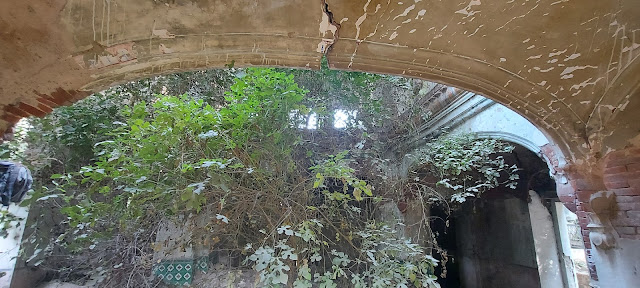November 6, 2016 (First Visit)
Located in the town of Kahna Nau, along the Lahore-Ferozpur road, stands a sacred Gurdwara, a place of worship for Sikhs. The Gurdwara complex is a magnificent three-storey building, showcasing remarkable architectural craftsmanship. In front of it, there is a two-story Langar hall, where free meals are traditionally served, as well as residential rooms for Sikh pilgrims. However, the current state of the shrine is one of abandonment and neglect.
While the shrine is officially under the care of Karyalewale Pir, the evidence suggests otherwise. Encroachments by individuals have started to encircle the premises, posing a threat to the sacred space. This unfortunate situation calls for urgent attention to preserve and protect the sanctity of the shrine.
The Gurdwara holds significant historical and spiritual importance. One such story recounts the transformation of Baba Jamiat Singh, who was once a notorious thief in the area. During one of his escapades, as he attempted to steal buffaloes, he found himself pursued and on the verge of being caught red-handed. Fearing capture, he turned to the recitation of the name of the Sat Guru (True Guru) and made a heartfelt vow to never steal again. Astonishingly, when the owner of the buffaloes approached his herd, he failed to recognize them. This incident profoundly impacted Jamiat Singh, leading him to become a devoted follower of the Guru and spend his entire life reciting the Guru's name.
The construction of the shrine was completed in Samvat 1942 (1885 AD), signifying the deep reverence and dedication of the Sikh community. In the past, the shrine used to host a vibrant annual fair, attracting devotees from far and wide. However, in recent times, the fair has lost some of its former splendor, reflecting the overall decline in the shrine's condition.
The Gurdwara's significance lies not only in its physical structure but also in the spiritual and cultural heritage it represents. The endowment of 500 ghumaon of land and ten shops to the shrine signifies the support and devotion of the community towards its upkeep.
Efforts must be made to revive the glory of this sacred place. The preservation and restoration of the Gurdwara, along with the reclaiming of its surrounding area, are crucial to maintaining its spiritual essence and cultural value. It is essential for the relevant authorities and the Sikh community to come together and take proactive measures to ensure the protection and revitalization of this historically significant Gurdwara.
Second Visit:- 20 November 2021




















